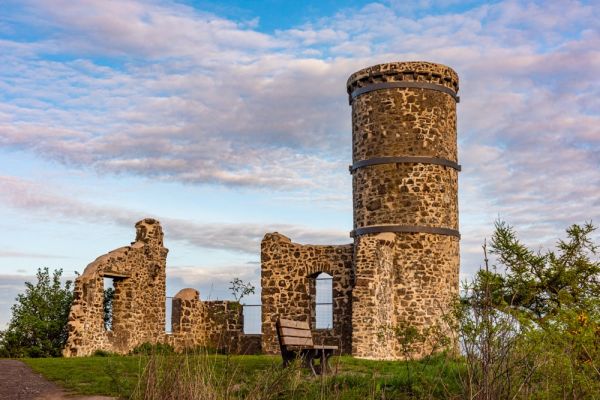Kinnoull Hill, located near Perth, Scotland, is a site rich in both natural beauty and historical significance. From its Bronze Age origins to its current status as a popular woodland park, the hill has witnessed centuries of human activity, cultural evolution, and conservation efforts. This article explores the hill’s remarkable journey through time, blending archaeology, mythology, and modern recreation.
The bronze age beginnings of Kinnoull Hill
The story of Kinnoull Hill begins in the Bronze Age, approximately 2000-800 BC. Archaeological excavations have uncovered various artifacts, including tools and weapons, which highlight the significance of this area in prehistoric times. One notable find is a bronze socketed gouge, which offers evidence of the craftsmanship that took place on the hill. These tools point to the likelihood of a well-established community that made use of the hill’s strategic location and natural resources.
In addition to the artifacts, Kinnoull Hill is home to the remnants of a Bronze Age fort. This fort likely provided a strong defensive position, given the commanding views it offered over the River Tay and surrounding landscape. Such a vantage point would have been invaluable for monitoring any approaching groups or enemies. Much like modern-day platforms where communities gather for entertainment, such as Nine Win Casino login, the strategic importance of the fort shows that Kinnoull Hill was not just a place of settlement but also of protection for its ancient inhabitants.
The cultural evolution and legends of Kinnoull Hill
As the centuries passed, Kinnoull Hill became embedded in local folklore and religious practices. In Celtic times, the hill was closely associated with ancient mythologies, most notably through its connection to the Dragon’s Hole—a cave situated near the summit. This cave, with its natural echoes, became a focal point for ancient Celtic rituals. The number nine, significant in Celtic culture, is said to resonate through the cave’s echoes, adding a mystical aura to the site. This connection between nature and spirituality suggests that Kinnoull Hill was seen as a sacred space where the natural world and the divine intersected.
In addition to its mythological significance, Kinnoull Hill also became the site of a yearly festival known as the Festival of the Dragon. During this festival, locals would gather at the Dragon’s Hole to celebrate Beltane, a fire festival marking the beginning of summer. The hill, with its commanding presence over the surrounding area, became a place of both reverence and celebration.
The modern history and transformation of Kinnoull Hill
By the 18th and 19th centuries, Kinnoull Hill had taken on a new role as a scenic and recreational destination. The most iconic feature of the hill from this period is the Kinnoull Tower, constructed in the 18th century by Thomas Hay, the 9th Earl of Kinnoull. The tower was built to resemble a medieval castle ruin and was meant to enhance the picturesque views from the hill. Today, the tower remains a popular destination for hikers, offering panoramic views of the River Tay and the surrounding countryside.
The 20th century marked a significant period of conservation and development for Kinnoull Hill. In the 1920s, the creation of the Kinnoull Hill Woodland Park helped preserve the area’s natural beauty. An arboretum was established, planting a diverse range of trees, including exotic species, which continue to flourish today. The park became a popular destination for nature lovers and outdoor enthusiasts, offering walking trails and wildlife viewing opportunities.
Today, Kinnoull Hill serves as a reminder of both Scotland’s ancient history and its dedication to conservation. The area is managed as a woodland park, providing a sanctuary for local wildlife and a place of recreation for visitors. With its rich blend of history, mythology, and natural beauty, Kinnoull Hill continues to captivate all who visit.
A place where past meets present
Kinnoull Hill stands as a testament to the enduring connection between Scotland’s past and present. From its Bronze Age fortifications and ancient Celtic rituals to its transformation into a modern woodland park, the hill has remained an important landmark for thousands of years. Today, visitors can not only enjoy the natural beauty of Kinnoull Hill but also reflect on its historical and cultural significance. Whether hiking through its trails or exploring its ancient sites, Kinnoull Hill offers a unique journey through time, where the echoes of the past continue to shape the present.
